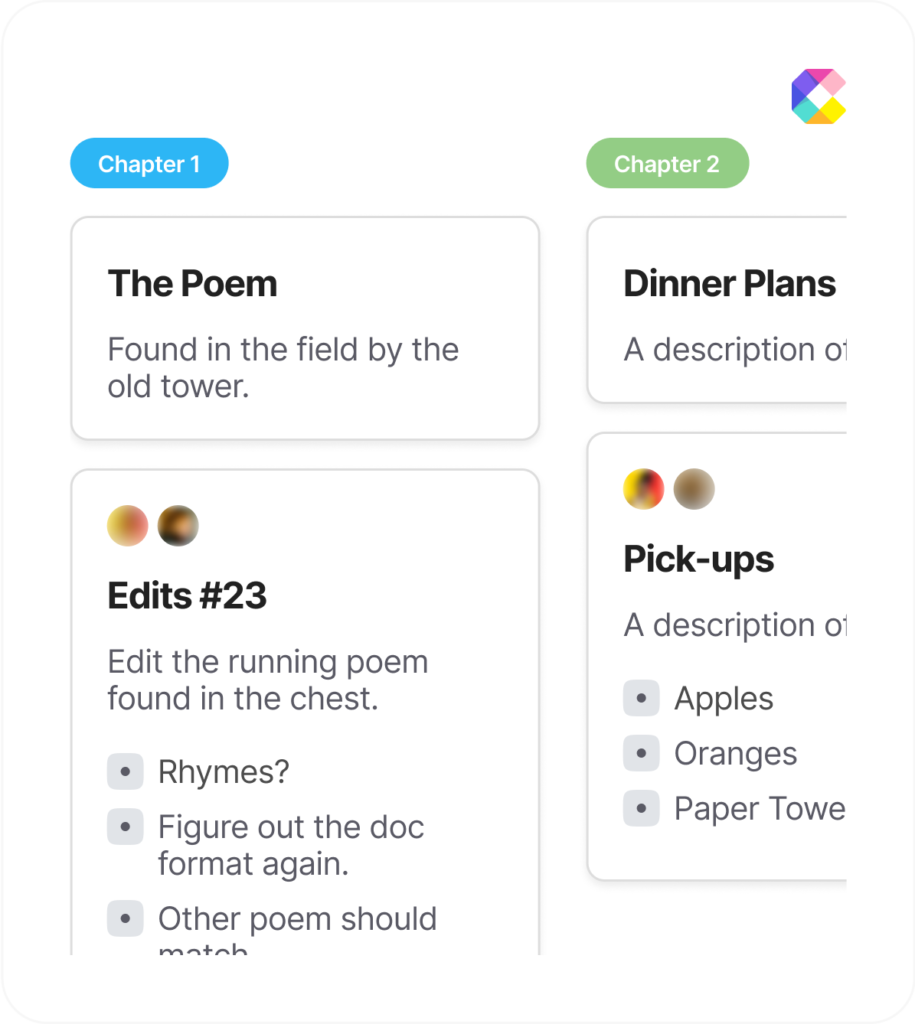What is the true secret to writing powerful books that readers can’t put down?
No, the answer is not a gripping story. Even the most interesting story can fall flat if one single element is overlooked. The answer is not perfect editing, an excellent use of proper English (or your writing language of choice), or even having plot twists readers don’t see coming. When we think of great stories, we don’t think of stories.
We think of heroes, heroines, side characters, and villains.
If the characters are boring, one-dimensional, or unlikable, readers won’t enjoy the story, no matter how well written, edited, or exciting the plot of the story might be.
So how do you write characters that readers love or love to hate? Well, that’s a little more complicated. But if you think back to every book, movie, or TV show you’ve consumed, I bet you can pick out favorite characters.
And if you think about them, you can identify why you love them, or even why you love to hate them.
Are your characters ruining your book?
There’s this common misconception that your plot or story idea can make or break your book.That if your book manages to be fantastic, gripping, and thrilling, that readers will look past editing and other issues to just enjoy a great story.
Unfortunately, this misinformation can ruin an otherwise promising premise, or worse, ruin an author’s career before they have a chance to get off the ground.
So how can authors starting out avoid this potential pitfall? Well, let me share the true secret behind books that readers can’t put down: the characters.
When we think back to our favorite stories, we don’t think about the plot of the story nearly as much as we think about the characters. Likewise, our emotional attachment isn’t to the idea of the book—we become attached and emotionally invested in the characters.
Creating complex characters with depth, flaws, and arcs isn’t an easy task, but it’s a worthwhile step that can mean the difference between writing success and failure.
So how do you create a character with depth and a complex arc?
Well, a great first step is to look at everyday people, or even yourself. You probably think of yourself as a good person—and you probably are!—but I’m sure you’ve done things you’re not proud of. Hey, everybody makes mistakes.
So we’re safe to assume your character has also made mistakes. Same goes for your life. I know that I’ve done both good and bad things, had good and bad things happen, and I strive to be better yesterday than I was today. That’s growth and progress, right?
Think about where you’ve been in life and how you’ve progressed. Now you have an excellent example of a character arc.

What is a character arc?
The character arc refers to the inner growth of your character over the course of their journey. They tend to fall into three different categories:
The positive “Heroes” arc. Think Harry Potter. He’s young and naïve at the onset of his story, but he grows into himself and becomes the hero. The Redemption arc falls into this category too, as farfetched as that might seem. Think Beast from Beauty and the Beast. He’s shallow, mean, and awful to start, but he redeems himself by the end of his story. Thus, we consider him to have a positive character arc. Keep in mind that the positive arc is not a straight line. Often these characters fall and backslide in moments of doubt, fear, or in the face of impossible odds. Again, no one is strong all the time, so your good character can have moments of weakness where they mess up, or do something bad (especially if they do something bad for good reasons, but still feel bad about it). Keep in mind also, that humans tend to stay where we’re comfortable. When you take the hobbit out of Hobbiton, they’re bound to experience fear, want to go home, and drag their feet. However, the hero will always push on in the face of adversity, no matter how big or small.
Then we have the negative character arc. My absolute favorite example is Frank Castle (The Punisher). He’s just a wonderful family man… until the mob murders his family. That’s his triggering event and leads to him vowing revenge on those who destroyed his family. And from there, he simply becomes The Punisher to the bad guys. He’s what’s known as the antihero architype and a fantastic example of a bad guy we secretly love.
The best villain is one readers identify with. Frank is a great example of what one man will do when pushed to the limit. He loses everything he holds dear—his whole reason for living dies with his wife and child. The only thing left of him is an undeniable desire for revenge. His actions and reactions are extreme, but we identify with him. The thought of losing our families tears our hearts out, and while we feel for Frank and what he’s been through, when you read the comics, you find yourself secretly rooting for him to get justice for his family. Make no mistake, he’s not a good guy. But he’s a good bad guy.
The final type of character arc is the flat character arc. This tends to reflect characters like Sherlock Holms who sticks to a holding pattern. Even without an arc, he’s still fascinating due to how he thinks and his unique ability to figure out puzzles most people could spend a lifetime on and fail. The flat character arc is very often seen in side characters, both because they tend to offer support to the main characters and as a literary device to keep the big arcs to the main characters. Writing a flat-arc character means you’ll have to work hard to make their personality one readers need to keep reading. Make sure the story benefits from a flat arc, ask yourself why you’re choosing a flat arc, and make sure that your character and/or story can do the heavy lifting of keeping readers engaged.
What about character flaws?
Can good guys have bad flaws? Can bad guys have mild flaws?
First, we need to establish what flaws are. There are mild character flaws; being long-winded, lazy, lacking common sense, being arrogant or naïve. Some character flaws are a bit worse: like being bitter due to a past event, being greedy, or downright mean. And then there are the truly terrible flaws, such as being manipulative, violent, or disloyal. Generally, heroes/heroines are given mild to bad flaws, but the awful flaws tend to be reserved for truly bad guys.
That said, I’ve read good characters who are violent and bad guys who only have mild bad traits. The rules can be broken, if you break them with a purpose and well. Keep in mind, though, that an unlikable main character is one that’ll be a hard sell when you’re asking a reader to spend the next 300 pages with them.
Why do characters need flaws?
Because heroes are boring when they’re perfect. Perfection in people doesn’t exist, so when we’re faced with a perfect character, there’s a sensation that they’re unbelievable or disingenuous due to our perspective of the world. Take Beauty and the Beast for example. Even Belle, good heart and all, comes across naïve, impulsive, and reckless. She acts on her emotions and puts herself and Beast in danger. She yells at him to control his temper. She’s not a perfect person, but her imperfections, her pure love for her father, and her ability to see the good in people make her shine.
Looking for a great way to tackle flaws? Consider your character’s backstory and try to come up with flaws based on what they’ve been through. The popular trend of looking up lists of flaws and assigning some to your character doesn’t make for a character with depth. Their flaws need to make sense in relation to their backstories and what they’ve experienced.
What’s next?
Now, how do you translate all of this into writing a complex character arc? Well, think about your characters. Over the course of the book, what happens to them? What in their history and backstory will impact their outlook on life or the decisions they make? Readers love a character they can side with, imagine being friends with, and can root for.
Readers want your main character to win, in spite of their flaws. We wanted Beast to get the girl. We wanted Belle to find love. We wanted Gaston to get what was coming to him, too. Or maybe that was just me.
The character arc is only part of the puzzle to writing characters readers can’t stop reading. Another important part is what your character has been through.
Bring on the backstories!
Your characters need rich backstories. And when I say rich, I don’t mean fantastic. Don’t misunderstand; some of my favorite stories have main characters who are average, everyday people with normal dreams.
People with difficult pasts like abuse, the child of a drug addict who grew up caring for their parent, or even the child who grew up with money, but no love because they were cared for by nannies and never truly knew their parents.
Give them a past (because everyone has one) and make them realistic because of this past. The child who was abused at home might flinch now when someone makes a sudden move. The young man who was cheated on might struggle to trust. A young woman who has been told she’s unlovable might become bitter or double down that she will find love.
And make sure their pasts are as complex as someone’s real life. None of us have done all good things. None of us have escaped some embarrassing, life-altering event. None of us have escaped being hurt, experiencing loss, or having the world slap us down. You character needs to have faced life, come out imperfect and flawed, and fight ahead anyway.
Use the outlining tool to build your story. Ensure a complete story arc and work out the major components of your story before you even begin writing.
Organize ideas- Build adequate conflict
- Ensure adequate pacing and character development




